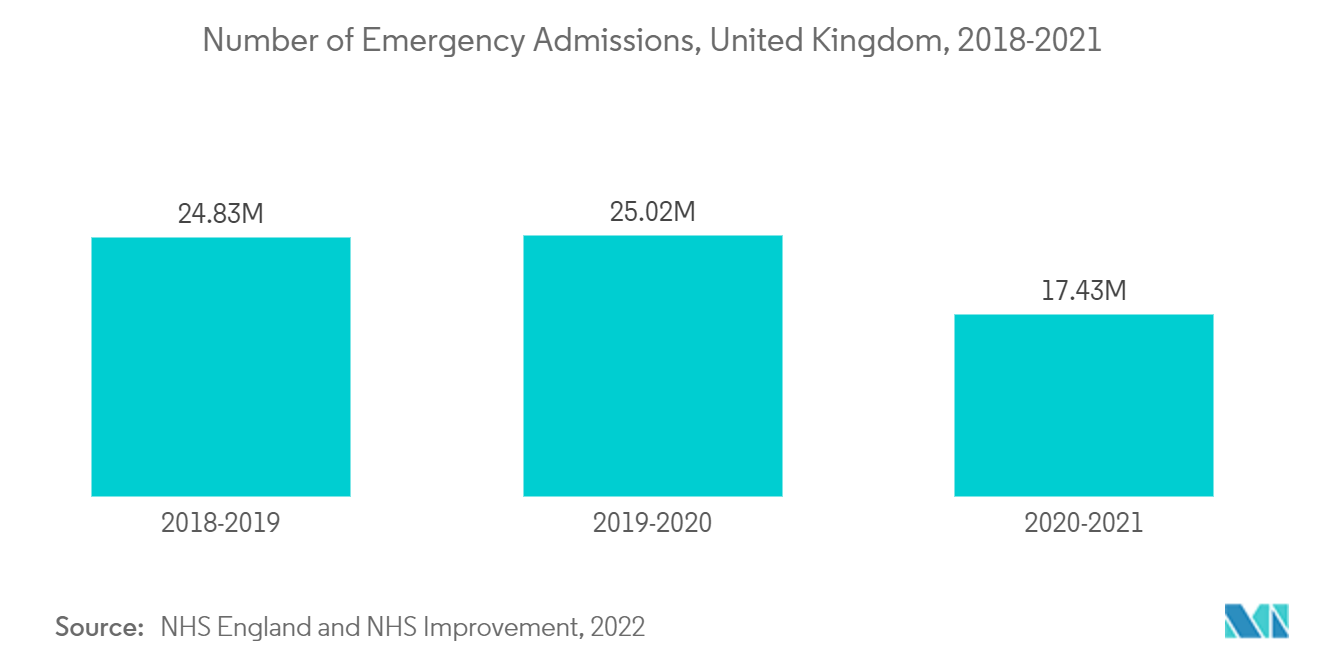Market Trends of Global Antiseptics and Disinfectants Industry
This section covers the major market trends shaping the Antiseptics & Disinfectants Market according to our research experts:
Surface Disinfectants Segment is Expected to Rise over the Forecast Period
Surface disinfectants are chemical agents designed to inactivate or destroy microorganisms on inert surfaces. These disinfectants work by destroying the cell wall of microbes or interfering with their metabolism. Using proper surface disinfection can prevent infections that develop during hospitalization, which are neither present nor incubating at the time of a patient's admission. There are a variety of chemicals used in surface disinfectants for different purposes. According to World Health Organization (WHO) data updated in March 2022, in non-healthcare settings, sodium hypochlorite (bleach/chlorine) may be used at a recommended concentration of 0.1% or 1,000ppm. Alcohol at 70-90% can also be used for surface disinfection. Surfaces must be cleaned with water and soap or a detergent first to remove dirt, followed by disinfection.
As per an article titled 'Disinfectants and COVID-19' published by the National Pesticide Information Center in January 2022, due to their accessibility and ease of use, liquid surface disinfectants are widely utilized in healthcare, hospitality, and food and beverage industries. Additionally, the availability of liquid surface disinfectant products with pleasant and energizing aromas has boosted product demand from residential end-users, which is anticipated to further fuel the market's expansion throughout the forecast period. The demand for disinfectants has increased in the market, due to the increasing number of hospital visits. For instance, the number of visits to the accident and emergency department (A&E) has increased continuously over the years in England. As a result, the demand for surface disinfectants has also increased, which has resulted in market growth.

North America is Expected to Dominate the Market
The North American region is expected to dominate the market primarily due to factors such as the large presence of key market players and a well-developed healthcare system in the United States. This has resulted in increased demand for antiseptics and disinfectants in hospitals. Growing healthcare spending, an increase in hospital-acquired infections, heightened awareness of the importance of maintaining personal hygiene on a global scale, and the development of cutting-edge healthcare facilities are some of the factors anticipated to drive the antiseptic and disinfectant market during the forecast period.
The ready-to-use disinfectant TB Quat for SARS-CoV-2 made by 3M was approved by the Environmental Protection Agency (EPA) of the United States in November 2020. The disinfectant's effectiveness against the virus was demonstrated by independent lab testing of 3M's TB Quat ready-to-use cleaner on hard, non-porous surfaces with a 60-second contact period. As a result, the market expansion is anticipated to quicken soon. Additionally, five SC Johnson household cleaning products were added to Health Canada's list of disinfectants that are effective against SARS-CoV-2 in January 2021. The following disinfectants have received Johnson's approval to kill SARS-CoV-2, the virus that generates COVID-19 symptoms like scrubbing bubbles. They are available in a range of scents. Consequently, the positive effects of past and current improvements made by many companies. Additionally, the growing use of endoscope reprocessors and surgical equipment with automatic disinfection sprayers are additional drivers that support market expansion. Moreover, the above-mentioned report also states that HCAIs are the most common complications of hospital care in the United States.
One of the key factors propelling the market throughout the projection period is the rise in food poisoning, cholera, and typhoid fever cases. Additionally, increasing consumer awareness of the importance of keeping homes clean is probably going to benefit market expansion. These factors have resulted in high demand for antiseptics and disinfectants in the United States.


